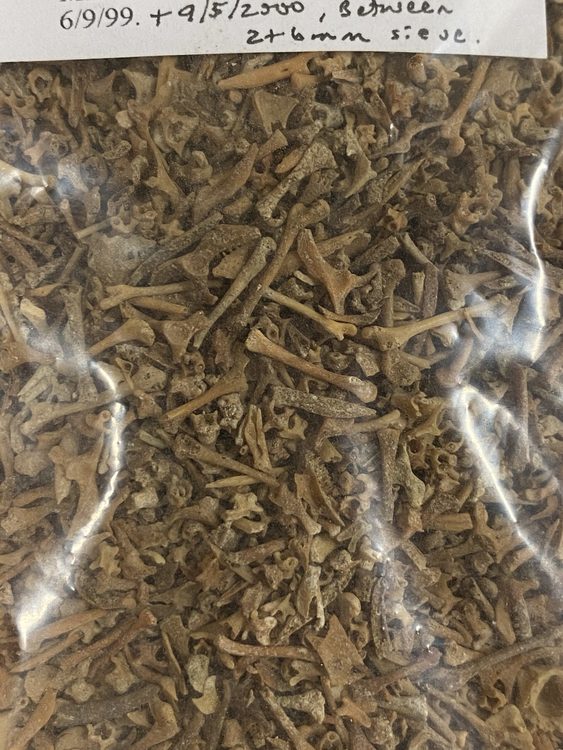Museums are places or buildings where objects of historical, cultural, artistic or scientific interest are exhibited, preserved or studied. The word ‘museum’ is derived from the Greek word ‘Mouseion’ (home to the Muses). In Greek mythology, the Muses were the 9 daughters of Mnemosyne and Zeus, who each presided over a different art or science.
Every year, New Zealand museums attract millions of visitors. Museum collections and exhibitions tell us about New Zealand, its people, flora and fauna. People visit museums for pleasure and for education. It’s here that they have the opportunity to explore our history, our culture and our place in the world.
Collections
Collections are an important part of museums.
People have always been interested in collecting objects and organisms. Sometimes, people like Sir Joseph Banks (a wealthy amateur scientist) and Dr Daniel Solander (a scientist trained by Carl Linnaeus) accompanied scientific expeditions for the sole purpose of collecting; other times, collecting was a hobby and was incorporated into daily activities, as it was for William Colenso.
Collections of historical or cultural value often end up in museums. One example is William Colenso’s plant collection. Colenso was a printer for the Church Missionary Society who arrived in New Zealand in 1834. He had a keen interest in botany and made many journeys along the East Coast of the North Island collecting over a thousand botanical specimens. In other cases, museums start and build their own collections through research and fieldwork.
All objects and organisms collected for museums have to be documented and conserved. The importance of museums lies in the fact that everything begins with the real object – the specimen. These must all be correctly and thoroughly identified and labelled. Specimens are then stored carefully to preserve them for the future.
You can have a look at a wide range of specimens held at Te Papa by visiting their website and browsing through their online catalogue. Here, you will find access to images of plant specimens collected by Dr Patrick Brownsey and Dr Leon Perrie, as well as to those collected by Sir Joseph Banks and Dr Daniel Solander during James Cook’s first voyage to New Zealand in 1769.
Why are collections important?
Museum collections serve many purposes.
At Te Papa, for example, there are more than 260,000 dried plant specimens, including approximately 19,000 fern specimens. These form Te Papa’s herbarium. Herbaria are a collection of preserved and catalogued plant specimens, mostly pressed and dried, used for teaching and research.
Te Papa’s herbarium is a huge library of information about what plants have lived and are living in New Zealand. These plant specimens are a permanent record of the plants found at that point in time. For example, the plant specimens collected by Banks and Solander are the first European collection of New Zealand plants. This provides a reference point as to what was growing here naturally before European colonisation.
Collections can be used to create publications documenting New Zealand plants. These are called Flora. All Flora build on the previously published Flora, with the first collections forming a reference point. Traditionally, Flora have been published as books but now can be published in a multimedia format or online.
Museum collections also hold other reference specimens, called ‘type’ specimens. These are the physical specimen of a new species as nominated by the author at the time of publication of the original description. Type specimens are important as they provide a reference point for the future if there are questions about the species.
Museum collections protect and preserve more than plant specimens
Museum collections safeguard not only plants, but animal, fossil and bone specimens, and other artefacts. As new technology develops, or as new questions arise, scientists look to old specimens and artefacts in collections for answers or further information.
For example, new DNA extraction techniques and radiocarbon dating refinements are revealing new information about past species. See From the smallest bones come the biggest secrets, Evolutionary research – advancing our understanding of us and Palaeogenomics and human evolution.
A DNA study of extinct elephant bird specimens held at Te Papa revealed the birds to be the kiwi’s closest relative – overturning prior thinking that the kiwi’s nearest relatives were the Australian emu and cassowary.
Working to unravel the TTX toxicity levels in sea slugs, scientists' sampled old specimen from Auckland Museum.
Archivist Rauhina Scott-Fyfe (Kāi Tahu, Kāti Māmoe, Waitaha) researched old papers and journals in the Uare Taoka o Hākena Hocken Collections to write a report on mātauranga Māori about the pakake, the New Zealand sea lion (Phocarctos hookeri).
In 1859 German Austrian geologist Ferdinand von Hochstetter carried out a geological survey around old Lake Rotomahana. A recent translation of his field diary, held in a collection in Basel, Switzerland, advanced the search for the lost Pink and White Terraces.
The work carried out on and about the specimens in museum collections is made public through permanent collections, exhibitions and temporary displays, websites and databases, publications, conferences, lectures and other events.
Related content
Find out how botany curators at Te Papa collect, describe and catalogue native plants in Documenting New Zealand’s Ferns.
Activity ideas
Traditional fern collections shows students how to collect, press, mount and label ferns.
Alternative fern collections lets students use their imaginations when creating digital herbaria.
Once students have established their collections, they can use the fern specimens or image cards to create a DIY fern classification system.
Useful links
Visit Te Papa’s herbarium web page.
Read Dr Leon Perrie's Te Papa blog article Plant-based accessibility: A year-long race to photograph our botany collection that talks about how Te Papa is moving to moving to image as many specimens as it can.
The New Zealand National Herbarium Network website provides information about the major public herbaria in New Zealand.




